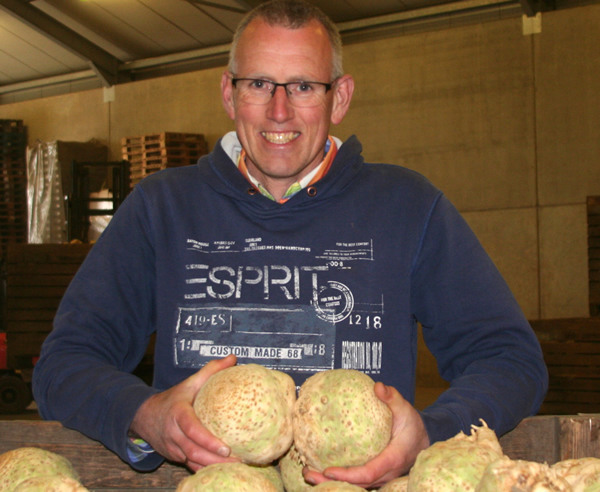There are many satisfied faces in the celeriac market this year. "We started the season in July with strong demand, and that has continued steadily. It's a unique situation because we usually begin in August with high prices, but as volumes increase, the market typically declines quickly. However, due to the shortage of product in Eastern Europe, we experienced an exceptional September where prices remained stable," says Pierre Sweep of A&P Sweep in Zevenbergen.
"Normally, exports to Eastern European countries drop off in September and October due to the local harvest, but it was extremely dry and hot there, and the celeriac just didn't grow. This created supply gaps. As a result, we were able to export extremely high volumes in September to countries like Romania, the Czech Republic, Hungary, and Poland. Demand has since slowed a bit, with mostly smaller orders now, but prices are still holding up well."

"In the Netherlands, we're seeing a significant difference between early and late plantings. The wet planting period in May caused some gaps in the planting schedule. The yields from the early celeriac crops have generally been good. The results for the late-planted celeriac will become clear in November, but they are unlikely to be very high. It's still uncertain how much growth the autumn will bring, but I expect we will continue to face a shortage on the supply side. In terms of quality, the celeriac looks excellent, so the outlook for this season is certainly positive," Pierre continues.
Prices for packaged and washed celeriac are between 55 and 60 cents. "What we're seeing now is that it's becoming harder for the industry to source raw materials at these price levels," says Pierre. This year, A&P Sweep increased its capacity by a third through investments in machinery and upgrades to its packaging lines. "That was necessary given the growth we've experienced in recent years. Celeriac is attracting more attention and is increasingly being used as a meat alternative due to its versatility."
Another product group in which Sweep has seen significant growth in recent years is rutabaga. "In the past, rutabagas were mainly grown in the northern provinces of the country, but we've taken up the cultivation ourselves. We now grow rutabagas on about 60 hectares, making us the largest player in the market. This season has also started well, with good yields and high quality. The product is still somewhat lesser known, but we have a wide distribution network, with about a third going to the fresh market and the rest to industry and processing plants."
For more information:
A&P Sweep
De Langeweg 9a
4762 RA Zevenbergen
Tel: +31 (0)6 53 15 53 23
[email protected]
www.sweep.nl
